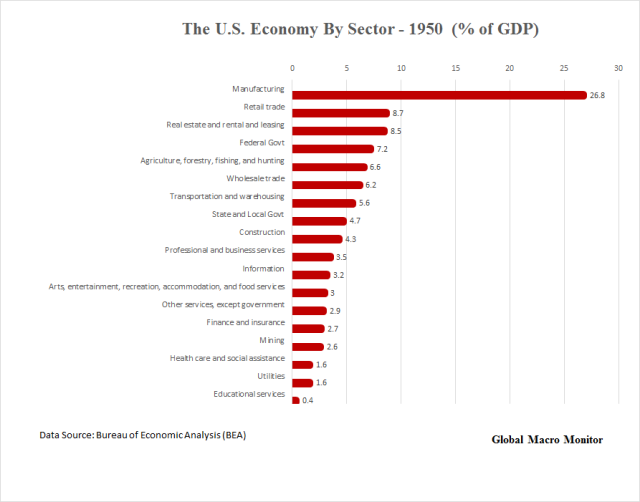By Macromon, Global Macro Monitor,
Interesting data that even surprised us. The real estate sector is now the largest sector of U.S. economy. Real estate is a sub-category of the BEA’s industry group, Finance, insurance, real estate, rental, and leasing. Could it be one of the many reasons why a real estate mogul now lives in the White House?
Some inferences from the data: 1) the U.S. economy is much more diversified than in 1950 and less dependent on manufacturing. That can be interpreted as good or bad depending on where you sit; 2) the U.S. is a FIRE economy. That is, Finance, Insurance and Real Estate, which now exceeds 20 percent of GDP; 3) Agriculture continues to decline as a share of GDP, which is now only 1 percent of the economy. This may change as “reefer” legalization becomes more ubiquitous and is counted in the official data; 4) the Federal government’s role in terms of value added to the GDP is shrinking; 5) State and local governments have almost doubled their share of output since 1950; and 6) Professional and business services have almost tripled their output as percent of the economy since 1950. There are many more. You decide and analyze.
One last point. Real estate is all about leverage and, traditionally, highly dependent on credit and lending.
https://macromon.wordpress.com/2017/02/07/u-s-gdp-the-real-estate-economy/
Tags: Finance-Insurance and Real Estate sectors of the U.S. economy exceeds 20 percent of GDP, lagrest sector in the U.S. economy is the real estate sector, professional and business services sectors, state and local governments have double in size, U.S. is a FIRE economy
 Oxstones Investment Club™
Oxstones Investment Club™


